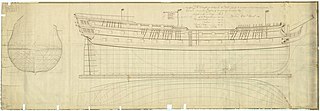Related Research Articles

HMS Colossus was a 74-gun third-rate ship of the line of the Royal Navy. She was launched at Gravesend on 4 April 1787 and lost on 10 December 1798. During her years of service she participated in the Battle of Groix, the Battle of Cape St Vincent, and the Battle of the Nile. While carrying wounded from the latter, she was wrecked at the Isles of Scilly. The wreck is a Protected Wreck managed by Historic England.

Invincible was originally a 74-gun ship of the line of the French Navy launched in October 1744. Captured on 14 May 1747, she was taken into Royal Navy service as the third rate HMS Invincible. She was wrecked in 1758 after hitting a sandbank. The wreck is a Protected Wreck managed by Historic England.

HMS A1 was the Royal Navy's first British-designed submarine, and their first to suffer fatal casualties.

Association was a 90-gun second-rate ship of the line of the Royal Navy, launched at Portsmouth Dockyard in 1697. She served with distinction at the capture of Gibraltar, and was lost in 1707 by grounding on the Isles of Scilly in the greatest maritime disaster of the age. The wreck is a Protected Wreck managed by Historic England.
The Rooswijk was a ship belonging to the VOC that, according to recent, non-contemporary, news reports, sank in 1740. The wreck is a Protected Wreck managed by Historic England.

The Protection of Wrecks Act 1973 is an act of the Parliament of the United Kingdom which provides protection for designated shipwrecks.

Hanover was a two-masted brigantine packet ship owned and operated by the Falmouth Post Office Packet Service, which operated between 1688 and 1852.

The Salcombe Cannon wrecksite is close to two other designated wrecksites in the Erme Estuary which the South West Maritime Archaeological Group (SWMAG) was licensed to investigate. In 1992 this group described the Salcombe Cannon site as:
St Anthony or Santo António was a Portuguese carrack that foundered in Gunwalloe Bay, Cornwall, in 1527 en route from Lisbon to Antwerp. She had a mixed cargo including copper and silver ingots. The wreck was recorded historically, because the salvage of the cargo was the subject of an international dispute that led to a Court of Star Chamber, but the location of the wreck was unknown until 1981. The wreck is designated under the Protection of Wrecks Act and is managed by Historic England.
Cattewater Wreck is a wooden three-masted, skeleton-built vessel, one of many ships that have wrecked in Cattewater, Plymouth Sound, England. This wreck is close to the entrance of Sutton Harbour, its name is still unknown but it is believed to be from the 16th century. It is a Protected Wreck managed by Historic England.

Coronation was a 90-gun second-rate ship of the line of the English Royal Navy, built at Portsmouth Dockyard as part of the '30 great ships programme' of 1677, and launched in 1685. She was lost in a storm off Rame Head, Cornwall on 3 September 1691 and is designated under the Protection of Wrecks Act 1973. The wreck is a Protected Wreck managed by Historic England.
The Hazardous, formerly Le Hazardeux, was a French third-rate ship of the line captured by the English and later sunk in Bracklesham Bay, West Sussex. The wreck was found in 1977. The site was designated under the Protection of Wrecks Act on 21 August 1986. The wreck is a Protected Wreck managed by Historic England.
The Erme Estuary wreck is a shipwreck site containing the remains of potentially more than one wreck that was discovered in 1990 on Mary Reef in the Erme Estuary in Dorset. The site was designated under the Protection of Wrecks Act on 1 May 1991. The wreck is a Protected Wreck managed by Historic England.

The wreck of the Klein Hollandia was found in 2019, 14 km southeast of Beachy Head, East Sussex, England. The site was designated under the Protection of Wrecks Act on 5 July 2019. The wreck is a Protected Wreck managed by Historic England.

The remains of a late sixteenth or early seventeenth century carrack was discovered in Yarmouth Roads, Isle of Wight, England in 1984. The site was designated under the Protection of Wrecks Act on 9 April 1984. The wreck is a Protected Wreck managed by Historic England.
The wreck of a wooden sailing vessel was discovered in Thorness Bay, Isle of Wight, England in 2010. The site was designated under the Protection of Wrecks Act on 31 July 2013. The wreck is a Protected Wreck managed by Historic England.
The Tearing Ledge Wreck consists of the remains of a ship, possibly one of the ships belonging to Admiral Cloudisley Shovell's fleet of 21 vessels returning from the Siege of Toulon via Gibraltar, that were found in 1969 on Tearing Ledge, Western Rocks, Isles of Scilly. The site was designated under the Protection of Wrecks Act on 12 February 1975. The wreck is a Protected Wreck managed by the National Heritage List for England.

The Rill Cove Wreck is an underwater wreck of a 16th-century Spanish cargo ship lying off the coast of Rill Cove, west of Kynance Cove, in Cornwall, England, UK.

The remains of a wreck carrying cargo of Middle Bronze Age weapons was found in 1977 off Moor Sand, Gammon Head, South Hams, Devon, England. The site was designated under the Protection of Wrecks Act on 14 February 1978. The wreck is a Protected Wreck managed by Historic England
References
- 1 2 3 "CHURCH ROCKS - 1000064 | Historic England". historicengland.org.uk. Retrieved 12 October 2020.
- ↑ "Time Team episode guides, series 3". Channel 4. Retrieved 25 September 2021.